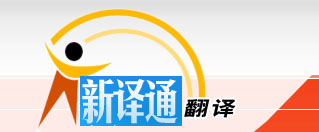本标准按照污水排放去向, 分年限规定了69种水污染物最高允许排放浓度及部分行业最高允许排水量。本标准适用于现有单位水污染物的排放管理, 以及建设项目的环境影响评价、建设项目环境保护设施设计、竣工验收及其投产后的排放管理。 (1997年12月31日之前建设(包括改、扩)的石化企业, COD一级标准值由100mg/l调整为120mg/l, 有单独外排口的特殊石化装置的COD标准值按照一级: 160mg/l, 二级: 250mg/l执行, 特殊石化装置指: 丙烯腈-腈纶、已内酰胺、环氧氯丙烷、环氧丙烷、间甲酚、BHT、PTA、奈系列和催化剂生产装置)。英语口译
In accordance with the condition of sewage discharge, this standard has formulated the annually highest allowable emission concentration of sixty-nine kinds of water pollutants and the highest allowable drainage discharge of some industries. This standard is applicable for the water pollutant discharging management of the existing units, the environmental impact assessment of the construction project, the design of environmental protection facilities of the construction project, the assessment and acceptance of completed project as well as its discharging management after putting into operation. (To petrochemical enterprises (including the reformed and expanded enterprises) established before December 31, 1997, the COD grade I standard shall be changed from 100mg/l to 120mg/l; to special petrochemical plants with single external discharge outlet, the COD standard shall be implemented in accordance with the grade I standard of 160mg/l and the grade II standard of 250mg/l; the special petrochemical plants refer to: acrylonitrile-acrylon, caprolactam, epichlorohydrin, propylene oxide, m-cresol, BHT, PTA, Nai series and catalyst production facilities).
为贯彻《中华人民共和国环境保护法》、《中华人民共和国水污染防治法》和《中华人民共和国海洋环境保护法》,控制水污染,保护江河、湖泊、运河、渠道、水库和海洋等地面水以及地下水水质的良好状态,保障人体健康,维护生态平衡,促进国民经济和城乡建设的发展, 特制定本标准。 日语口译
The purposes of formulating this standard are to implement the Environmental Protection Law of the People’s Republic of China, the Law of the People’s Republic of China on Prevention and Control of Water Pollution, as well as the Marine Environment Protection Law of the People’s Republic of China, to control water pollution, protect the water quality of surface water, such as rivers, lakes, canals, channels, reservoirs, oceans and etc., and underground water in good condition, guarantee human health, maintain ecological balance, as well as promote the development of the national economy and urban and rural development.


